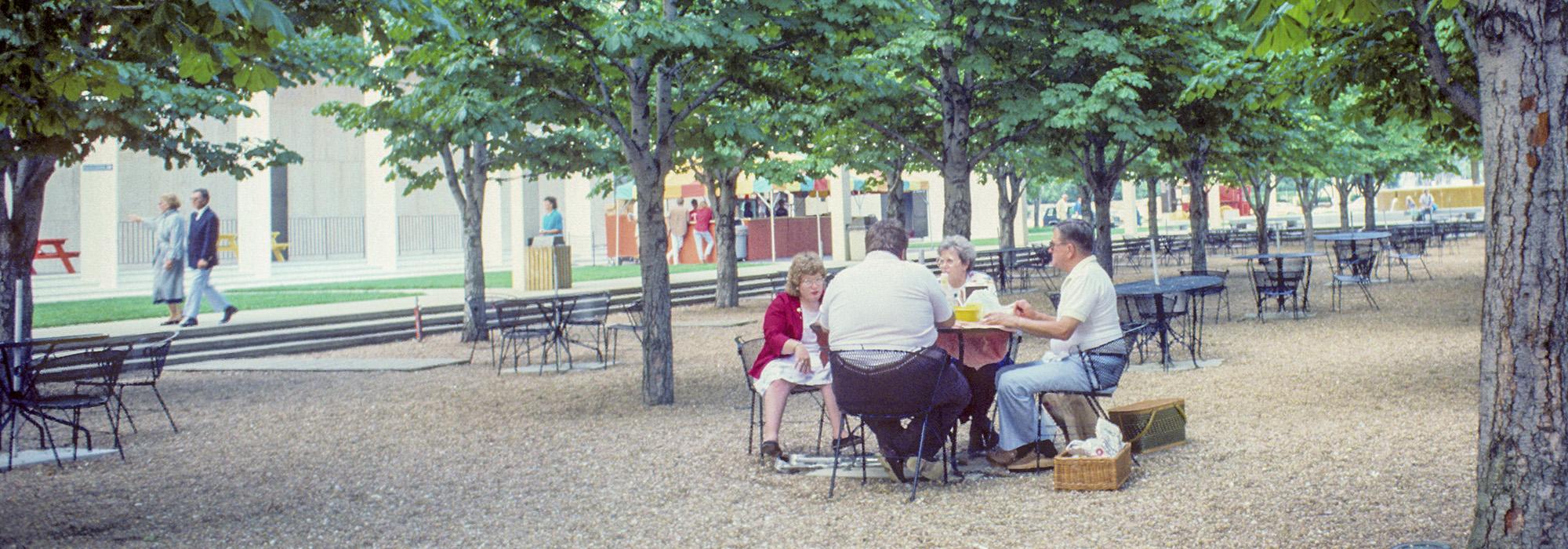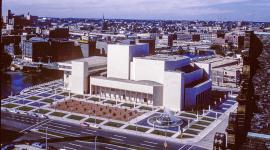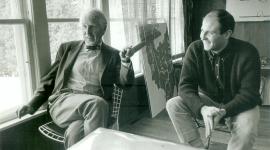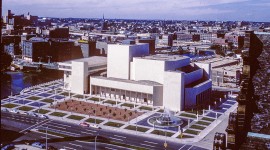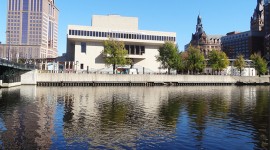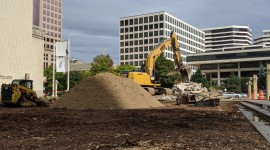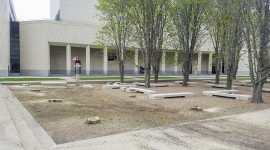A Loss for Landscape Architecture, a Disgrace for Milwaukee
A pair of recent meetings before members of the Milwaukee Common Council sealed the fate of Dan Kiley’s grove of horse chestnut trees at the Marcus Center for the Performing Arts. The city’s Zoning, Neighborhoods, and Development (ZND) Committee met on April 30, and its members voted, 3–2, to deny permanent historic designation to the Marcus Center and the grove. That action overturned the findings of Milwaukee’s Historic Preservation Commission (HPC), which, in a 4–1 vote on April 1, 2019, had recommended permanent historic designation for the property. On Saturday, May 11, the Marcus Center began demolishing the Kiley landscape, felling nearly twenty trees before the saws went silent.
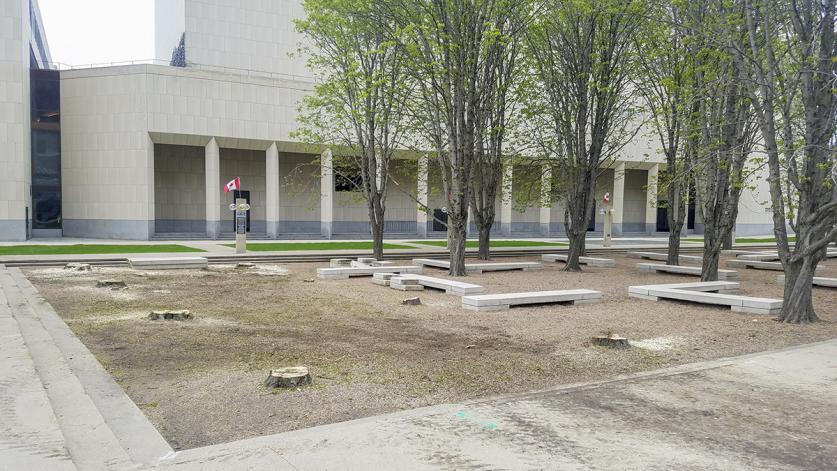
At the April 30 meeting, Jim Shields, the architect for the Marcus Center’s redevelopment plan, focused his testimony on the building designed by Harry Weese, which, he said, “no longer exists.” What has seemingly consigned the structure to oblivion, according to Shields, is that its exterior cladding has been replaced, the northern colonnade has been enclosed, and the façade of the eastern entrance has been redesigned. The HPC was, however, aware of those facts when it voted to give historic designation to Weese’s building and Kiley’s grove, with HPC staff specifically noting and illustrating how several Milwaukee structures have received local historic designation despite significant alterations to their building fabric.
But rather than a deepening discussion of the current design integrity of the building or the Kiley grove (no one has disputed the latter), the meeting focused largely on a red-herring issue—whether the grove, which sits just three steps below the surrounding plaza, could be retained while making it accessible to persons with physical challenges. In fact, a section of the meeting room was packed with physically challenged persons, many of whom waved signs opposing historic designation. This was an intensified replay of what first occurred at the earlier HPC meeting, when those supporting the redevelopment of the Marcus Center expressed fears that an historic designation for the building would somehow restrict efforts to comply with the Americans with Disabilities Act—a notion that Alderman Bauman, who is also a member of the ZND, then correctly identified as “a false argument.”
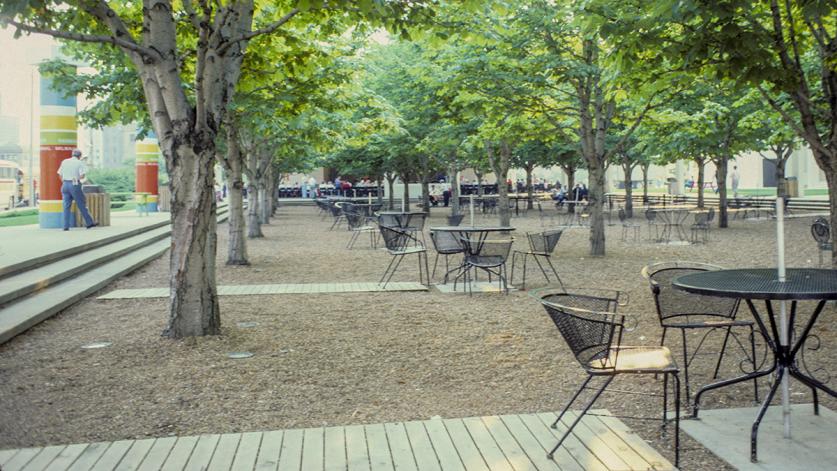
But what was perhaps the most harmful statement in favor of destroying the Kiley landscape did not come from Marcus Center executives or from representatives of the firms hired to undertake the redesign, or from any Milwaukee resident, for that matter. Rather, it came from Vermont landscape architect Peter Meyer, who had worked for Kiley during the decade prior to his death at the age of 91. The Marcus Center paid Mr. Meyer to come to Milwaukee and appear before the committee. He began his extensive testimony by questioning whether Kiley was even involved in the project: “I was surprised that the original planting plan by Dan Kiley was just a planting plan,” he said. “There’s a grove of trees, there’s a grid, but there’s nothing else there, and while the grid of trees is an iconic design statement that Kiley used, the rest is really not.”
Mr. Meyer expressed further skepticism, saying “I’ve never seen an urban plaza by Dan Kiley where we didn’t have trees along the street.” But as former Kiley protégé Joe Karr subsequently pointed out to TCLF, “Harry [Weese’s] ten-foot-high pylons really define the space. That’s why trees would be redundant on the perimeter. The light pylons actually work as a row of trees around the perimeter.” That question is, however, ultimately moot because in an interview published in March 2019, Karr, who actually worked on the Marcus Center project while employed in Kiley’s office in the mid-1960s, said that he regarded it as a “completely collaborative project between two of the most creative individuals” he had ever met—that is, Dan Kiley and Harry Weese.
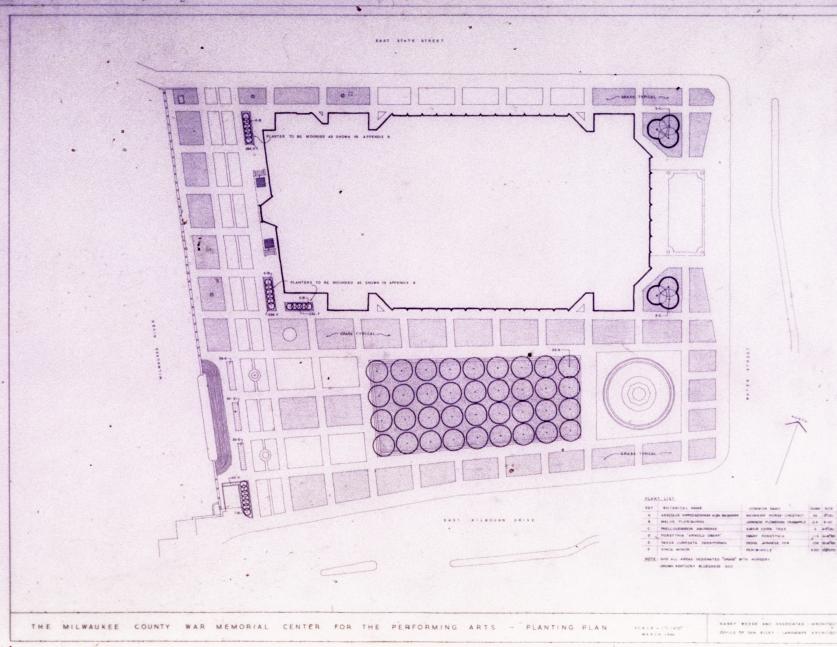
Nevertheless, Mr. Meyer painted a picture of a landscape that he doubted was actually designed by Kiley, adding that, even if it were, Kiley would not have minded its destruction. The imprimatur of a former employee and personal acquaintance made for effective testimony against the grove’s historic designation. At one point, Pat Kressin, a principal with the engineering firm GRAEF, which has been hired to work on the Marcus Center redevelopment plan, turned to Meyer and said, “Why don’t you tell them the story about Chicago and how Dan really enjoyed people using the space.” Taking that cue, Meyer told the committee about visiting the South Garden at the Art Institute of Chicago with Kiley, recalling how his employer took great joy in seeing the space full of people. “From what I understand, that [Marcus Center] grove is not full of people all that often,” Meyer added. “Personally, having known Dan so well, he would be disheartened and disappointed to learn that this space that we’re attributing to his legacy no longer functions as intended.” He concluded, “I think there’s an opportunity here to do something a whole lot better, and I think that Dan would agree.”
According to renderings provided by the Marcus Center, the “something a whole lot better” that will replace the work of one of the most influential landscape architects of the twentieth century is a strip of grass lawn flanked by two rows of trees—a space explicitly intended for outdoor events and programming. What was once a powerful work of art by a recognized master is now slated to become a nondescript, flat, green space, indistinguishable from countless others.
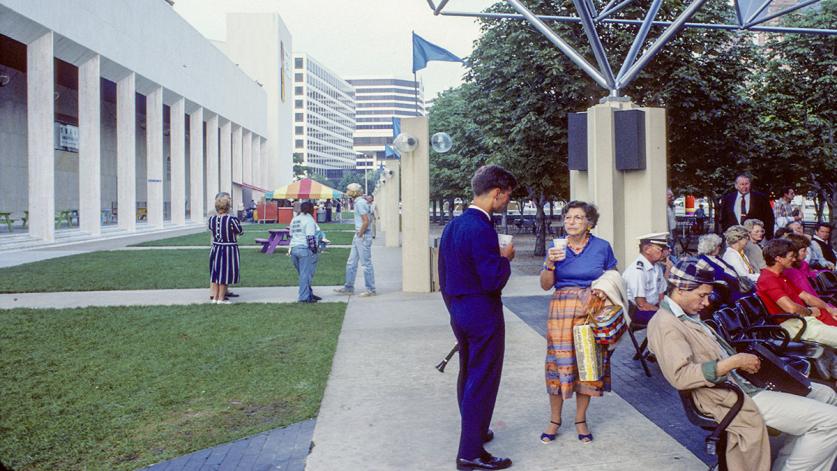
The Cultural Landscape Foundation (TCLF) presented testimony in support of the grove’s historic designation at the April 30 meeting, providing context about Kiley’s importance to his profession and about the place of the Marcus Center grove in his oeuvre. Many Milwaukeeans, too, spoke passionately about the value of Kiley’s design and why it should not be erased. Among them was Jennifer Current, the local landscape architect who has worked tirelessly to save the grove since the threat to destroy it emerged, and who, along with architect Mark Debrauske, co-sponsored the nomination to the HPC. Another was County Supervisor Steven Shea, of District 8, who told the committee that “Removing the grove would be a disgrace,” adding, “I don’t believe the grove is in decline…please preserve the grove.” Shea is not alone in questioning the Marcus Center’s oft-repeated claims that Kiley’s grove of trees is dying: The city’s forestry staff has also disputed those assertions.
An enlightening exchange followed between Supervisor Shea and Alderman Robert Bauman, which clarified the utter lack of public input and oversight with regard to the Marcus Center’s proposed redevelopment, despite the fact that the site—both the building and the land—is a county-owned, i.e. public, property.
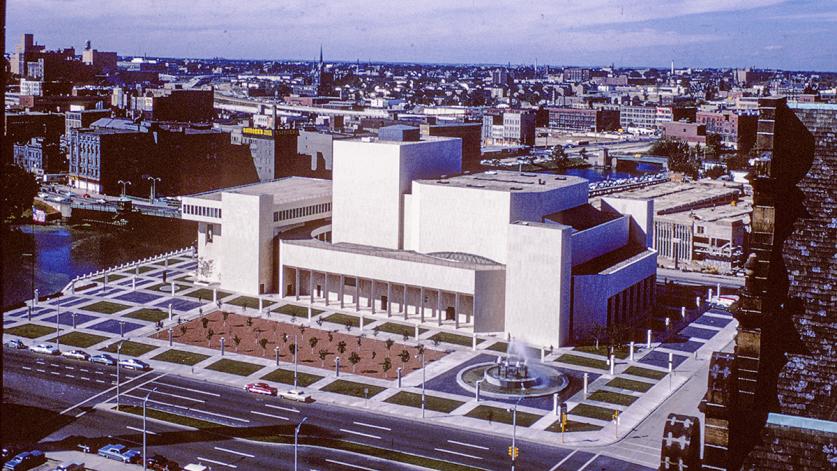
Having been voted down before the ZND, the matter of the grove’s historic designation was brought, on May 7, 2019, before the Milwaukee Common Council, which would be expected to follow the committee’s recommendation and deny the designation. There Alderman Cavalier Johnson made a last-ditch effort to avoid the final vote, proposing an amendment to approve the formation of a “friends group” that would help maintain the landscape via fundraising and volunteer efforts. “My thought was that we could come to a happy medium and provide an opportunity for both sides to not get everything they want,” Johnson later told Urban Milwaukee. His motion failed, however, by the slimmest of margins in a 7–8 vote. Efforts to designate the county-owned property as historic failed in a final vote of 4–11.
Although the Marcus Center, which ironically prides itself in offering Milwaukeeans “the best of cultural and community programming,” has already destroyed Kiley’s work, what may prove harder to erase, and what the case of the historic Kiley grove has laid bare, are the strange circumstances by which some $10 million in taxpayer money will be spent to redevelop a publicly owned property without the input of the public or their elected representatives.



